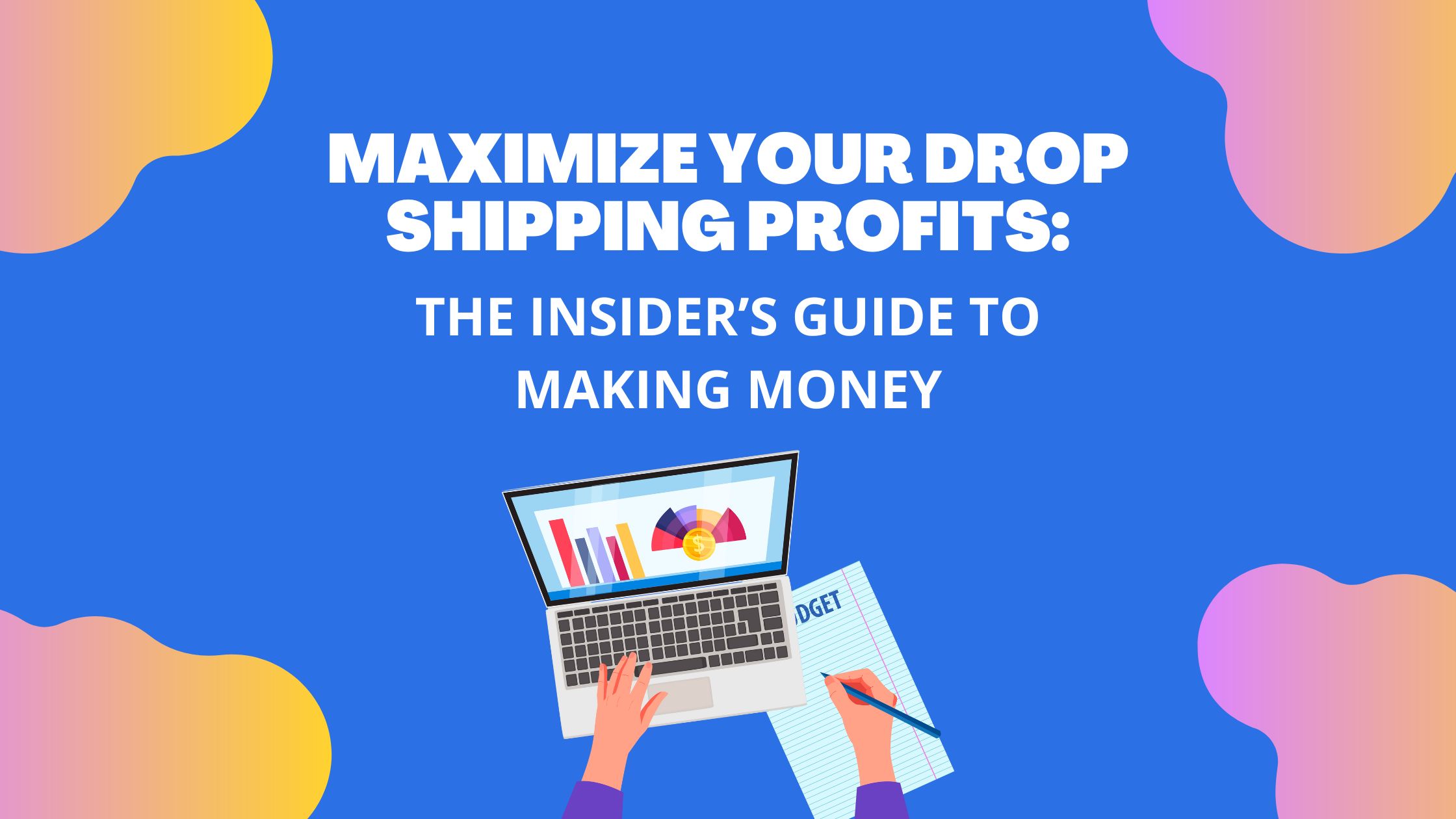Maximize Your Drop Shipping Profits: The Insider’s Guide to Making Money with Ease
Drop shipping is a business model that allows online retailers to sell products without maintaining a physical inventory.
Instead, participants partner with a supplier or manufacturer who holds the inventory and ships the products directly to the retailer’s customers.
With no inventory, this can be a convenient and low-risk way to start an online business. Unlike other business models, dropshipping requires minimal upfront investment and allows the retailer to focus on marketing and customer service rather than fulfillment.
Is drop shipping profitable?
A drop shipping business can be profitable, but it is not guaranteed. Several factors can impact the profitability of a drop shipping business, such as competition, product margins, shipping and handling costs, and customer service. To increase the chances of profitability, it is vital to carefully research and choose a niche with high demand and good profit margins, as well as a reliable supplier. In addition, focusing on customer service and building a strong brand can also help increase the chances of success for a drop shipping business.
Factors to Consider When Evaluating the Profitability of Drop Shipping
- Competition: Drop shipping is a popular business model, which means there is a lot of competition. To be successful, retailers must find a niche or target market that is not already saturated with competitors.
- Profit margins: Drop shipping profit margins can vary significantly depending on the products being sold and the supplier being used. Retailers should research and choose products that offer a good balance of demand and profitability.
- Shipping and handling costs: As the retailer, you will be responsible for covering the cost of shipping and handling for each order. These costs can eat into profit margins, so it’s important to factor them into pricing strategy.
- Customer service: Providing good customer service is important in any business, but it can be especially challenging in a drop shipping model. Without direct control over fulfillment, it can be harder to address issues that arise.
Other Considerations for Drop Shipping Profits
- Finding and selecting a supplier: A successful drop shipping business relies on a reliable supplier. Retailers should carefully research and evaluate potential options, considering product quality, shipping times, and pricing factors.
- Setting up a drop shipping store: Setting up a drop shipping store involves creating a website or online store where products can be listed and sold. Many platforms and tools are available to help with this process, such as Shopify, WooCommerce, Amazon, and Ebay. Retailers will also need to set up payment and fulfillment processes, which may involve integrating with a payment gateway and setting up an automation system.
- Case studies or success stories: Reading about the experiences and strategies of other successful drop shipping businesses can provide valuable insights into the potential profitability of this business model. Look for case studies or success stories that detail the challenges and successes of real drop shipping businesses, and consider what strategies and tactics they used to achieve profitability.
Managing and Scaling a Drop Shipping Business
- Streamlining operations: To effectively manage and scale a drop shipping business, retailers should consider implementing systems and processes to streamline operations and increase efficiency. This may involve automating tasks such as order fulfillment and communication with suppliers and implementing inventory management and customer service procedures.
- Expanding the product line or targeting new markets: Retailers can increase sales and revenue by expanding their product line or targeting new markets.
Risks and challenges
Drop shipping risks and challenges can include issues such as product shortages or delays and problems with suppliers or shipping carriers. It’s essential to be prepared for these potential issues and have contingency plans to minimize their impact on your business. Other drop shipping challenges include intense competition, market changes, and customer preferences. To reduce risks, stay up to date on industry trends and regularly review and optimize your business strategy.
Conclusion
Drop shipping can be profitable, but it requires careful planning and execution. It’s essential to do your research and choose a niche with high demand, good profit margins, and a reliable supplier. By focusing on customer service and building a solid brand, you can increase the chances of success for your drop shipping business.
Our top Recommended Drop Shipping Service.
Looking to learn more about drop-shipping?
Wholesale2b can help with their done for you drop shipping platform!
No more manual orders. Simply add products to your store then orders are shipped to your customers with just 1 click.
Jump to our home page, register for a free account and get instant access to browsing over 1,000,000 Dropship ready products from over 100 suppliers.

